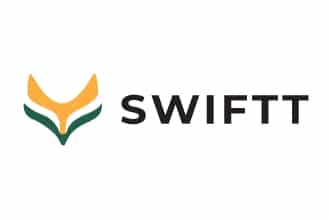Forests from space: The surroundings of Darmstadt as seen by the European Copernicus Sentinel satellites (Photo: ©ESA)
Risk Detection
Satellites as saviours of the forests
Worldwide, forests are the habitat for most amphibian, bird and mammal species, but also for around 300 million people. A further 1.6 billion people earn their living from forests. Forests have numerous ecological functions: They regulate the water balance, protect against erosion, store carbon – the list goes on. The benefits of this ecosystem are estimated at over 100 trillion euros per year. This is more than the entire global gross domestic product.
Although forests can adapt to long-term changes in environmental conditions, they are vulnerable to sudden disturbances such as heavy pest infestations, fire and storms. Climate change is increasing these risks: Insect pests such as the bark beetle are multiplying more, drought favours forest fires and severe storms are becoming more frequent.
Early action can minimise risks and reduce the economic and ecological damage. In the EU project Satellites for Wilderness Inspection and Forest Threat Tracking, SWIFFT for short, scientists at L3S are working with European partners to develop a holistic forest monitoring system that recognises impending dangers with the help of satellite images. SWIFFT aims to provide forest managers with low-cost, simple and effective remote sensing tools that are supported by powerful machine learning models. The identified risks are clearly labelled and displayed on overview maps.
The satellite data is provided by Copernicus, the European Union’s earth observation programme. The large amounts of data and the rise of artificial intelligence make amazing things possible: “Thanks to openly accessible satellite data in combination with the latest AI algorithms, we are able to regularly analyse the entire forests of Europe in a short space of time,” says Sven Ysker, who works on assessing the risk of forest fires at L3S.
The new tools are tested under real conditions and optimised in a targeted manner. This is why several end users from the forestry industry are also involved in the project, including the French Groupe Coopération Forestière, an association of forestry cooperatives that manage 2.1 million hectares of private forest. Rīgas meži is also involved. The municipal company manages forest land, parks and gardens in the Latvian capital Riga.
As soon as the overview maps are finalised and the areas with windthrow damage, insect infestation and fire risk are shown in detail, you can get started: Forest managers can use the tools to recognise risks, intervene in good time and allocate resources efficiently. The system is expected to monitor and protect up to 39.6 million hectares of forest by 2030. This could save the forestry industry up to half a billion euros in monitoring costs.
“With SWIFTT’s sustainable, effective and cost-effective forest management tools, Europe will be able to tackle climate change more effectively and preserve biodiversity through healthier forests,” says Ysker.
Contact

Prof. Dr. Jörn Ostermann
Jörn Ostermann is a member of the L3S and heads the Institute for Information Processing at LUH. He conducts research in the field of signal processing with a focus on video, sequencing and audio data.

Dipl.-Ing. Sven Ysker
Sven Ysker works in the field of machine learning with a research focus on risk assessment. He is currently working on forest fire risk prediction using artificial intelligence.


